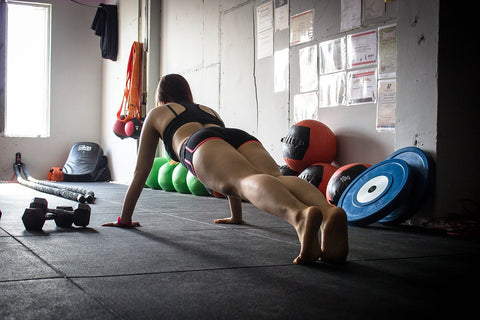5 Tips on Building Your Home Gym
Building a home gym can be a daunting task. As you begin your research, you'll notice that some people can get pretty complex with their builds. Others like to keep it simple. What you do depends on your available space and budget. Here are 5 tips that will help you navigate the process and deliver the perfect set up for you.
1 – Establish Your Space
First, you’ll want to look at your available space and decide how much room you are willing to give up to establish your home gym. Some people choose basements, back patios, and garages. Some people decide to use their sheds, barns, and even attics. Choosing your space will set limits on how much flooring you need, what equipment you can get, and how you will go about reaching your goals.
2- Think about your goals
So now that you’ve established your space, ask yourself, “what am I trying to achieve?” Goals allow you to track progress, making sure your sweat equity brings you the fitness returns you are looking for. Goals also help you build confidence. Once you have decided you want to lose weight, gain muscle, sculpt a beach bod, or just make it up the stairs without running out of breath, you can move forward on building your home gym.

3– Start from the ground up
When building a home gym look at your space and start from the ground up. Flooring is important as it protects your equipment and your space from the rigors of exercise. If your gym only takes up a section of a larger space, or you are looking for something easy to install and non-permeant, check out POWERStock Home Gym kits. These kits come in pre-cut and packaged sizes that add a professional gym look without the professional gym price. If you don’t see the size you want available, you can get a custom order here. This will protect your floor and your equipment from damage as you continue to build upon your gym.
For an outdoor gym, the classic choice is horse mats due to their weather resistance and durability. Another option would be VulcanFit home gym flooring, which is a vulcanized rubber mat similar to the horse mat, but with a fresh mitigating agent used to significantly reduce that rubber aroma.
These two options will create the space that will go on to be your perfect home gym.

4 – Equipment: Shop Around
Once you have established your space and your goals, it’s time to look at your equipment. Some cheap equipment that is vital to an programs warm up and recovery are Foam Rollers. There can be a big jump in quality from $10 to $30, but pick what’s right for your budget and how much you will use it. The full foam rollers are usually a bit cheaper and don’t last as long, but will get the job done. The other essential for any gym would be Resistance Bands. These give you a great warm up, mobility, and recovery tool, as well as being able to incorporate resistance band workouts into your routine. After these basics, look at your goals to determine the rest of your equipment. Weightlifting and cardio equipment can be bought new, at reuse-it fitness stores, or on public shopping spaces like Facebook Marketplace and Craigslist. From Squat Racks to Stationary Bikes, you will be able to find almost any equipment from others close by, and usually at a discount. Jen Reviews (www.jenreviews.com) has an extensive article on How to Choose Exercise Equipment, According to Science. Check it out for a detailed breakdown on all the equipment available.

5 – Think in Stages
You may want it all right away but sometimes our budgets, schedules, and space prevent us from building our dream home gym right away. Its good to start the process and build in stages. Get what equipment you can at first and slowly add parts as you use it. Also its good to buy some of the equipment second hand. As you use it more and more, its easier to justify buying new equipment because you know it will have a quality return on investment.
For more articles please visit (https://abacussurfaces.com/blogs/news).




Comments (0)
There are no comments for this article. Be the first one to leave a message!